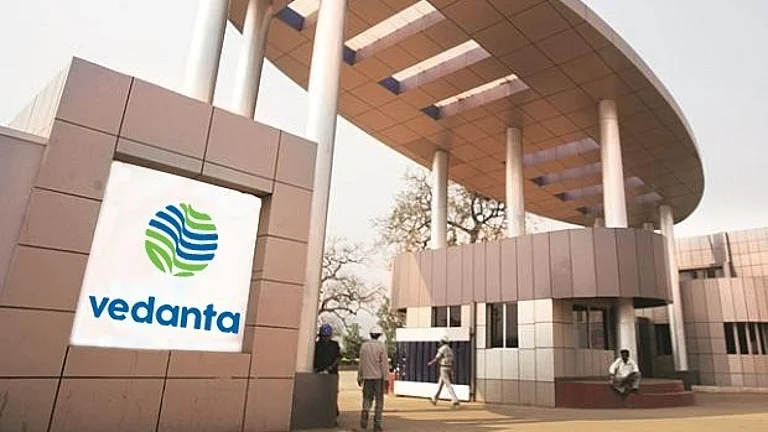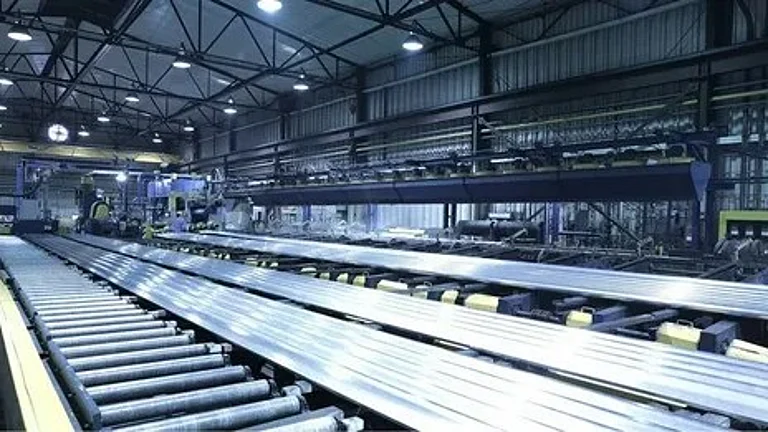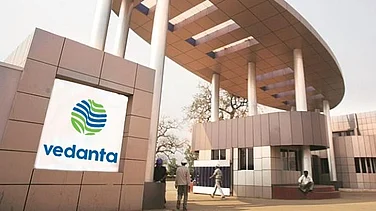It is a sunny day in the Sundarbans and the rippling waters of the Durgaduani river flow sunlight-golden between the islands Gosaba and Bali. In 2006, this distributary of the Ganga in the lowest part of the delta was considered for setting up a tidal renewable energy (RE) project. It did not take off.
Boatman Shamshuddin Sardar – who prefers to call himself Raj – explains: "I was about seventeen years old at the time. We lived on an island called Chandipur by the banks of Bidyadhari river. My father was a boatman like me and our family lived off the money he made, carrying passengers to and from islands. He and other boatmen, as well as local fishermen of the region who made a living from this river, were really worried that their income would come to an end if a tidal barrage was constructed."
Durgaduani is just eight kilometres long, but connects two large rivers, Bidyadhari and Gomoti in the maze of waterways that form the Sundarbans. It is a crucial transport link for locals and tourists. Construction of a tidal power station would entail blocking off the river at both ends to hold back the water as in a dam, and then releasing the water during low tide. Environmentalists and locals joined hands to protest. They argued that disruption of the natural flow of the river would threaten wildlife on land and water and lead to soil erosion.
The economic (livelihoods) or environmental (ecosystem) cost, however, was not the only deterrent. The exorbitant accounting (outflow of money) cost, too, was a reason for shelving the project. “The estimated project cost of the 3.75 MW tidal power plant was to the tune of Rs 238 crore (USD 30 million),” says Joy Chakraborty, Divisional Engineer, West Bengal Renewable Energy Development Agency (WBREDA), which was to undertake operations with financial support from the Government of India.
The central Ministry of New and Renewable Energy (MNRE) stated that the capital cost of producing tidal RE was between Rs 30 crore and Rs 60 crore per MW.
Currently, however, discussions are on again to revive tidal RE projects in the Sundarbans, according to WBREDA sources. “Cost has dropped from Rs 60 crore and is now between Rs 30 and 35 crore per MW (including capex),” says an official. Asked about the environmental concerns, he says, “Technology has improved and is very simple now. There will be no hydroelectric type blocking or storing of water. The river's natural flow will not be disturbed or obstructed. Underwater turbines will be used to tap into the currents as the ebb and flow of tides take place. There will be no one-way discharge of water artificially."
Chakraborty adds that experts have suggested that further research and development should be conducted to find better and cost-effective technology for the furtherance of such projects.
Having faced impacts of climate change in the form of stronger cyclones and saltwater intrusion, boatman Raj is now all for RE. But he thinks Durgaduani is not large enough to produce electricity. He would like a tidal electricity generation project on the Matla, a much larger distributary of the Ganga.
India must find ways to keep its pledge to produce half its electricity from non-fossil sources by 2030 to achieve ‘net zero’ target by 2070. Solar power is likely to play a major role in this transition, but it will need to be complemented.
Many homes in the Sundarbans have solar panels, in addition to power from the national electricity grid. But both can fail during a cyclone. Priyotosh Debnath, a 19-year-old resident of the large island Gosaba, runs a cybercafe. "When a cyclone rages, it destroys anything that falls in its path, indiscriminately uprooting everything from trees to electric lines to solar plates,” he says. “We are plunged into darkness and have no option but to wait indefinitely for restoration of power or the repair or replacement of the solar panels." This is extremely damaging for his business. Fisher Swapan Haldar, 54, says, "Many houses in our area have solar power, installed as backup for the time when there is a blackout. The solar plates or panels are fixed to the roofs. But during a cyclone when electric wires snap we cannot rely on solar power because entire roofs get blown away."
In 2009, when Cyclone Aila ripped through the Sundarbans, it reportedly destroyed solar power infrastructure worth Rs 50 crore (USD 6 million). At that time, solar power was the only source of electricity in the area. The grid reached the location in 2012.
Dr Anurag Danda, Director of WWF's Sundarbans Programme, is among the scientists researching the delta's RE potential including the viability of tidal RE. He says tapping into the delta's abundant tidal RE potential is feasible. However, it is crucial to conduct detailed assessments of costs (both economic and environmental) and other factors prior to implementation of projects. Pointing out the limits of solar power in the Sundarbans, he says, "Solar RE production is land-based and land in the Sundarbans is at a premium." Indeed, parts of the delta are rapidly shrinking with several islands, especially Ghoramara and Mousuni, facing the Bay of Bengal, eroding day by day.
Ghoramara is currently powered only by rooftop solar panels. Islanders fret each time a cyclone alert is issued. Says Gouranga Mete, a social worker, "We are completely dependent on solar power, which works perfectly when the weather is good. Other than multiple light bulbs and fans, we charge our phone batteries using solar energy. But when there is a severe storm or a cyclone, there is no power."
Here tidal energy can come to the rescue. "Unlike solar or wind, generation of tidal energy is not impacted by the weather," explains Dr Sugata Hazra, Professor of Oceanography at Kolkata's Jadavpur University. Production of solar energy can be interrupted, especially in a cyclone-prone region like the Sundarbans, not just because of the damage that cyclones can cause to solar RE infrastructure but also because of the lack of sunlight during storms. "The vortex of wind energy, too, is unstable," adds Hazra. Blades of wind turbines are vulnerable during storms. "Tidal energy, on the other hand, is generated underwater and is dependent on the astronomical phenomenon of lunar cycles (when turbines catch and convert the kinetic energy of the ebb and flow of water into electricity), which is not determined by and is independent of any climatic changes," says Hazra. "Therefore, tidal energy works like clockwork and is a reliable form of renewable energy."
Hazra says, "The tidal energy capacity of the Indian Sundarbans delta can meet the power demands of the entire biosphere region comprising 1,031 villages in 19 administrative blocks."
According to a 2013 study assessing India's tidal energy capacity (measured in units of kilowatts per hour) conducted by the Central Electricity Authority for MNRE, the country's estimated potential includes "about 7,000 MW in the Gulf of Cambay, 1,200 MW in the Gulf of Kutch in the state of Gujarat and about 100 MW in the Gangetic Delta in the Sundarbans region of West Bengal".
With the pledged deadline of 50 percent energy from RE breathing down its neck, a governmental panel has asked MNRE to work towards identifying a suitable location for setting up of a model tidal RE unit. A section of scientists and environmentalists, however, would like to see the name of Sundarbans struck off the list of possible sites. "What about the deleterious effects of tidal power generation on the local environment?" asks a scientist, who as the science editor of a national news daily, has covered the topic of RE extensively. He says, “We are seeing this problem in a considerable way with solar and hydroelectric power, the infra for both of which damage the soil, change land use and increase water consumption. Therefore, Sundarbans makes an odd choice considering that it already faces significant coastal erosion." He further avers that a capacity of 100 MW is not worth endangering an ecosystem as precious as the Sundarbans.
The premise that tidal energy generation would endanger the ecosystem, however, is debatable, especially considering the improvements in technology. Part of the misgivings about tidal energy arises out of comparisons with hydroelectric power plants or dams which have been constructed at great environmental and humanitarian cost in the past. “But tidal is not hydro,” says the WBREDA official. Danda adds, "RE technology, including tidal RE, has undergone changes and improved over the years. Technology is designed to cause minimum interference."
The Sundarbans can add substantially to national RE production, Hazra is confident. "100 MW is not an insignificant amount at all," he says. "In fact, it is huge." The sites tested have revealed that water currents meet the criterion of a velocity of at least 1 metre per second which is the minimum requirement for production of tidal RE. Further, if augmented with solar, it would decentralise power production and do away with the delta people’s dependence on outside sources for power. The investment would benefit the local economy and perhaps create employment. Gosaba fisher Haldar, who was among those who supported the setting up of the tidal plant in 2006, says, "We were fed a lot of misconceptions about tidal plants and how it would destroy our Sundarbans but people don't understand that it would have created employment for the locals."
Not everyone agrees. Gathered at the hut of one of the neighbours, villagers express their opinion about tidal RE. "It's not about generating employment," snaps a woman, who catches crabs from Durgaduani for a living. "It's about generating electricity. We already have electricity and solar backup. Sometimes that fails. We don't mind if we get tidal electricity. Just don't block our creeks and rivers for it." Clearly in the Sundarbans, this issue is a point of debate as far as a barrage type tidal station is concerned.
Yet, there is consensus when someone suggests, "There is so much open sea around the Sundarbans, why not tap into that for jol bidyut (literally, electricity from water)?"
Back in the boat, the Durgaduani turns a bend. A vast vista of rushing, rolling water opens up. It is the Gomoti river. On the other side, stretching languidly across the horizon is an island covered in foliage. "That island has no need for electricity," says Raj. No human lives there. It is one of the homes of the tiger.
(With support from the Earth Journalism Network)

























